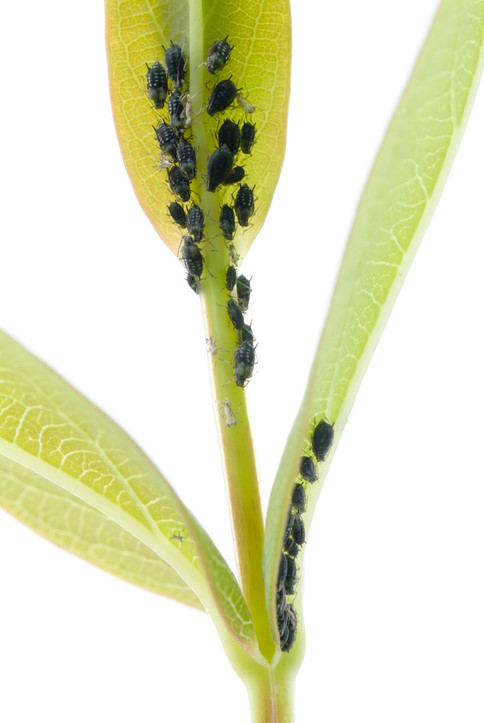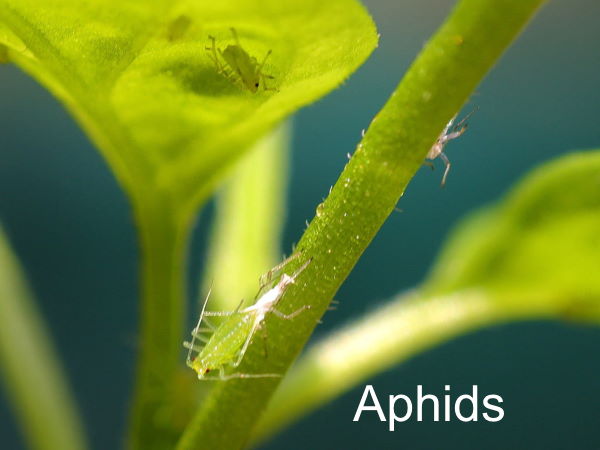Aphids: How to Identify and Get Rid
of these House Plant Pests
What Aphids Look Like
Aphids are tiny, soft-bodied insects that may be black, green, brown, or red. They are pear-shaped and have long legs. Some have wings and others are wingless.
 Photo credit istockphoto
Photo credit istockphotoWhere to Find Aphids on Houseplants
They typically attack soft, new growth of plants. You may find them clustered on growing tips, young stems, and flower buds. They cause damage to houseplants when they suck plant juices, leaving sticky deposits of plant sap called honeydew. If you discover a sticky substance on houseplant leaves or surfaces below your plant, your plant likely has an infestation.
These plant-sucking insects cause distorted leaves and buds. Some types feed on roots.
Aphids thrive in warm and humid conditions and are likely to invade plants in the spring and summer months. However, they can show up any time of the year and multiply quickly. Look for them clustering on buds, leaves, and stems.

Aphids are visible, especially along stems and leaf axils. Treat infested plants immediately because these pests can quickly cause damage, then move on to your other houseplants.
How to Get Rid of Aphids on Indoor Plants
Home remedies sometimes do the trick. Try water or soapy water first, before resorting to harsh chemicals.
Wipe off plant leaves -- top and bottom -- with a damp cloth. This will remove insects and their eggs. If you have a large infestation, spray the plant with water several times to dislodge the pests from the plant.
Clean heavily infested plants with a cloth or sponge dipped in soapy water. Use mild dishwashing liquid that doesn't contain fragrance or other additives. Squirt 2 teaspoonfuls into 1 gallon of room-temperature water and gently wash the plant's leaves, undersides of leaves, and the base of the leaves where they attach to the stems. If this seems too tedious, cover the soil with a newspaper or plastic wrap, hold the plant by its base, and plunge the foliage into the soapy water. Wait 10 minutes then rinse the plant well using room-temperature water.
It's a good idea to spray your plant once a week with a solution of soap and water to prevent bugs from coming back. Remember to rinse the plant with clear water afterward to remove any soapy residue.
Rubbing alcohol kills aphids, too. Dab them with a cotton swab soaked in rubbing alcohol. Repeat applications every 2 to 3 days. This method works well, but use it with caution. Covering the whole leaf with alcohol damages plant tissue.
If you have a large infestation, or just some stubborn bugs, try an Insecticidal Soap.
Made of sodium or potassium salts, insecticidal soaps are effective and are not harmful to people or pets if they are used as
directed on the manufacturer's label.


